Eco-Friendly Timber Products: Rising Demand Explained
- September 19, 2024
- 0 comment
As global awareness of environmental issues like deforestation, climate change, and unsustainable resource management increases, so does the demand for eco-friendly timber products. Timber is one of the earth’s most versatile materials, utilized in construction, furniture, and packaging, and its sustainable management is crucial for environmental conservation.
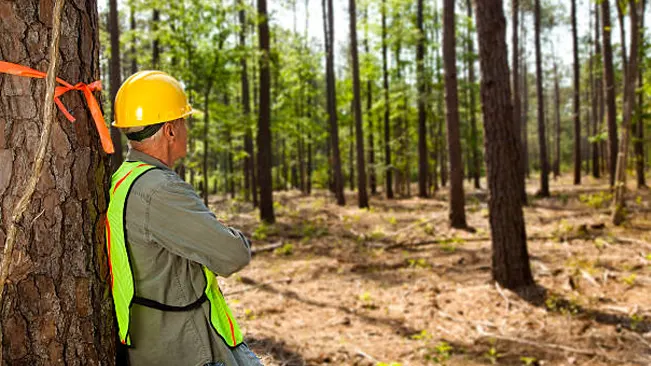
Eco-friendly timber products, harvested from sustainably managed forests, play a key role in reducing environmental impacts and supporting sustainable practices across industries. This overview explores eco-friendly timber, its environmental benefits, the key markets driving demand, and the factors fueling this growing trend.
What are Eco-Friendly Timber Products?
Eco-friendly timber products are derived from forests managed sustainably, ensuring that timber harvesting minimizes environmental impact. These products are often certified by internationally recognized organizations such as the Forest Stewardship Council (FSC) or Programme for the Endorsement of Forest Certification (PEFC). The certification guarantees that the wood is sourced responsibly, promoting the conservation of biodiversity, protection of ecosystems, and reduction of carbon emissions.
Eco-friendly timber products include:
- Timber for construction.
- Wood-based furniture and interior decor.
- Paper products and packaging made from sustainable wood sources.
- Recycled or reclaimed wood used in various industries.
The Environmental Benefits of Eco-Friendly Timber Products
Eco-friendly timber products offer significant environmental advantages by promoting sustainable forest management and reducing the carbon footprint of industries. These products help preserve ecosystems and biodiversity while also supporting the fight against climate change by sequestering carbon dioxide.
1. Carbon Sequestration
Trees absorb carbon dioxide (CO2) during their growth. By using timber products sustainably, we maintain carbon storage within the wood, helping reduce the amount of CO2 in the atmosphere.
2. Renewable Resource
Unlike concrete or steel, timber is a renewable resource that can be replenished through sustainable forest management practices like replanting and selective logging.

3. Biodiversity Preservation
Eco-friendly timber practices ensure that forests maintain their biodiversity. Wildlife habitats are preserved, and ecosystems continue to thrive without being compromised by destructive harvesting.
4. Reduced Energy Consumption
Producing timber requires less energy compared to other materials like steel or concrete, which involve higher emissions in manufacturing processes.
Countries with the Highest Demand for Eco-Friendly Timber Products
The global demand for eco-friendly timber products has surged as consumers and industries become more conscious of their environmental impact. The following countries represent significant markets for sustainable timber products.
| Country | Timber Demand (in million cubic meters) | Eco-Friendly Timber Share (%) | Key Drivers of Demand | Market Growth Rate (Annual %) |
|---|---|---|---|---|
| United States | 105 | 40% | Strong demand from the construction industry, government regulations, and consumer preferences. | 3.5% |
| Germany | 50 | 55% | Green building projects, sustainability goals, and demand for FSC-certified products. | 4.2% |
| United Kingdom | 30 | 35% | High adoption of sustainable building certifications like BREEAM. | 3.8% |
| Japan | 45 | 25% | Traditional wooden construction demand and public green building initiatives. | 2.9% |
| Australia | 28 | 30% | Emphasis on eco-friendly construction and forest conservation. | 3.3% |
The data above shows how each country’s demand for timber products is impacted by consumer preference, government policies, and industrial needs. The U.S. leads in timber demand, driven by construction, while Germany stands out for its strong adoption of eco-friendly timber.
How the Demand Differs Regionally
Regional demand for eco-friendly timber products varies widely across the globe, influenced by regional environmental policies, cultural practices, and economic drivers. While some regions focus heavily on sustainability and eco-friendly construction, others may prioritize different resources based on their market demands and development stage.
1. North America
- High Demand for Sustainable Construction: The U.S. and Canada are increasingly adopting mass timber in commercial construction due to its carbon-sequestering properties.
- Focus on Consumer Products: In the U.S., eco-conscious consumers are pushing for sustainable furniture, home goods, and packaging materials.
2. Europe
- Strict Environmental Regulations: Countries like Germany and the UK have stringent regulations that enforce sustainable sourcing of timber for construction, furniture, and consumer goods.
- Green Building Certifications: Europe’s focus on certifications like LEED and BREEAM has created a higher demand for certified sustainable timber.
3. Asia
- Cultural Influence on Timber Use: In Japan, traditional wooden architecture drives the demand for eco-friendly timber, while sustainability initiatives in public buildings add to the demand.
- Rising Industrial Use: China’s booming construction industry is gradually transitioning to sustainable timber products due to global export demands for certified wood.
4. Australia
- Eco-Friendly Policies: Australia’s emphasis on forest conservation has led to increasing demand for FSC-certified timber, particularly in green building initiatives and the furniture industry.
Eco-Friendly Timber Market Statistics:
| Year | Market Size (Billion USD) | Growth Rate (%) | Key Drivers | Major Regions |
|---|---|---|---|---|
| 2018 | 10.5 | 3.8 | Sustainable construction, green building certifications | North America, Europe |
| 2019 | 11.2 | 4.0 | Consumer demand for eco-friendly furniture | North America, Europe, Asia |
| 2020 | 12.3 | 5.5 | Government regulations, increasing environmental awareness | Europe, Asia-Pacific |
| 2021 | 13.7 | 6.0 | Corporate social responsibility (CSR), green supply chains | North America, Europe |
| 2022 | 15.1 | 6.8 | Innovation in eco-friendly timber products, digital marketplaces | Asia-Pacific, Europe, North America |
Factors Driving the Growing Demand
Several key factors are driving the increasing demand for eco-friendly timber products globally. These include heightened environmental awareness among consumers, regulatory measures by governments to curb deforestation, and the growing focus on sustainability in corporate and construction practices.

- Environmental Awareness: Consumers are becoming more aware of the negative impacts of unsustainable practices, leading them to opt for eco-friendly timber products in construction, furniture, and household goods.
- Green Building Initiatives: Global trends in sustainable building and architecture are pushing developers to use eco-friendly timber as a sustainable material that meets certification standards like LEED, BREEAM, and others.
- Corporate Social Responsibility (CSR): Many companies are adopting CSR initiatives that prioritize sustainability. These companies use eco-friendly timber to meet environmental standards and appeal to eco-conscious consumers.
- Government Regulations: Governments worldwide are implementing stricter regulations to curb deforestation and promote sustainable forest management, which in turn fuels demand for certified timber products.
Market Trends in Eco-Friendly Timber Products
Rise of Cross-Laminated Timber (CLT)
CLT is being used extensively in large-scale construction projects due to its strength, renewable sourcing, and reduced carbon footprint compared to traditional building materials like steel and concrete.
Growth in Sustainable Furniture
Consumers increasingly demand eco-friendly, FSC-certified furniture, driving manufacturers to adopt sustainable wood in furniture production.
Digital Timber Marketplaces
Online platforms are emerging to connect buyers and sellers of sustainable timber, making it easier to source and purchase eco-friendly wood.
Challenges to Meeting the Growing Demand
Growing demand for eco-friendly timber products brings with it several challenges that the industry must overcome to meet consumer needs. Some of the primary obstacles include:
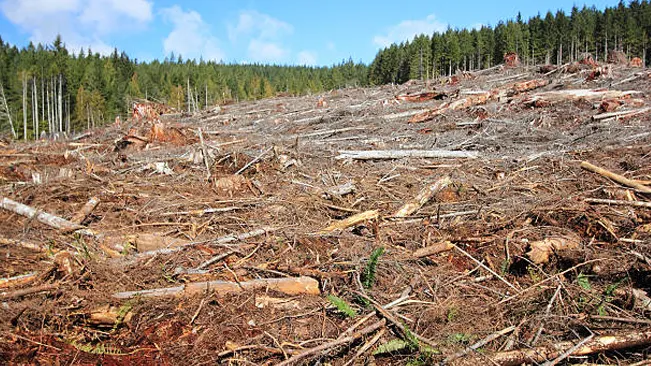
- Sustainable Sourcing: Ensuring that all timber is harvested sustainably is challenging, especially in regions where illegal logging or deforestation continues.
- Supply Chain Transparency: It is often difficult to trace the origins of timber through global supply chains, making it hard for consumers and businesses to verify the sustainability of the products they purchase.
- Cost Premium: Certified sustainable timber often comes with a higher price tag, which can limit its accessibility to budget-conscious consumers and industries.
- Deforestation: Despite growing demand for eco-friendly timber, illegal logging and deforestation remain ongoing issues in many parts of the world, which hinder progress toward sustainable forestry.
Conclusion
The growing demand for eco-friendly timber products reflects a global shift toward sustainability in response to environmental concerns like climate change, deforestation, and resource depletion. As countries adopt stricter regulations and consumers prioritize environmentally responsible practices, the market for eco-friendly timber will continue to expand.
However, the industry must address challenges such as sustainable sourcing, supply chain transparency, and deforestation to meet this rising demand and ensure the long-term viability of eco-friendly timber.
Frequently Asked Questions (FAQ’s)
- What are eco-friendly timber products?
Eco-friendly timber products are sourced from sustainably managed forests and often carry certifications like FSC or PEFC to ensure minimal environmental impact. - Why are eco-friendly timber products important?
These products help reduce deforestation, conserve biodiversity, and lower carbon emissions, promoting sustainability in industries like construction and furniture making. - What certifications should I look for when buying eco-friendly timber?
Look for certifications like Forest Stewardship Council (FSC) and Programme for the Endorsement of Forest Certification (PEFC), which guarantee sustainable sourcing. - Which industries primarily use eco-friendly timber products?
Industries such as construction, furniture manufacturing, paper production, and packaging are key users of eco-friendly timber products. - How does the demand for eco-friendly timber vary globally?
Demand is highest in regions like North America, Europe, and parts of Asia, driven by green building initiatives and stricter environmental regulations. - How does eco-friendly timber help combat climate change?
By promoting sustainable forestry, eco-friendly timber products act as carbon sinks, absorbing carbon dioxide and reducing greenhouse gas emissions. - Are eco-friendly timber products more expensive than traditional timber?
Eco-friendly timber can be more expensive due to certification processes and sustainable harvesting practices, but many consumers and industries are willing to pay a premium for sustainability. - What types of eco-friendly timber products are available?
Common products include construction timber, furniture, flooring, paper, and recycled or reclaimed wood products. - What is the market trend for eco-friendly timber products?
The market is growing rapidly due to increased consumer awareness, government regulations, and a shift toward sustainability across industries. - How can I ensure the timber products I buy are eco-friendly?
Ensure that the products carry certifications like FSC or PEFC, and verify the origin of the timber through transparent supply chains.

James Wilson
Forestry AuthorJames Wilson has over 15 years of experience in forestry economics, specializing in sustainable practices, investment opportunities, and financial management. He has contributed to notable publications like "Forestry Today" and "EcoFinance Journal" and is known for providing practical and insightful advice. With a degree in Environmental Economics, James stays updated through continuous learning and active participation in industry discussions. Outside work, he enjoys hiking and nature photography, bringing a well-rounded perspective to his professional role.



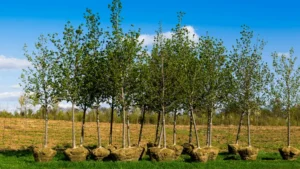
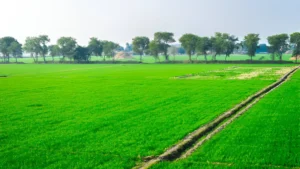




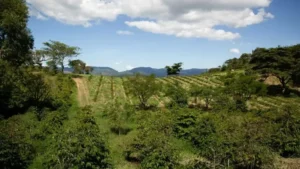



Leave your comment